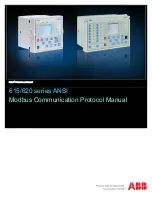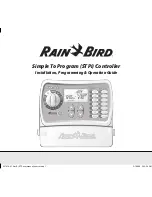
BATTERY PRECAUTIONS
Observe the following general battery warnings:
n
As batteries contains flammable substances such as lithium or other organic solvents, they may
cause heating, rupture or ignition.
n
Risk of explosion if battery is replaced with a battery of an incorrect type.
n
Do not short circuit, disassemble, deform or heat batteries.
n
Never try to charge a visibly damaged or frozen battery.
n
Keep batteries out of reach of small children. Should a child swallow a battery, consult a phys-
ician immediately.
n
Avoid direct soldering to batteries.
n
When discarding batteries, insulate the + and - terminals of batteries with insulating/ masking
tape. Do not put multiple batteries in the same plastic bag.
n
When improperly disposed, lithium batteries may short circuit, causing them to become hot,
burst or ignite.
n
Store in a cool location. Keep batteries away from direct sunlight, high temperature, and high
humidity.
n
Do not throw batteries into fire.
REMOVAL/DISPOSAL OF INTERNAL BATTERY
NOTE! Electronics and batteries must be physically separated before disposal. Make sure that
electronics or batteries are not thrown in the household waste.
1. Remove the clip. Use a screwdriver to unscrew the screws.
2. Remove the rubber cover by hand.
3. Use a screwdriver to unscrew the screws in the back of the transmitter. Remove the front
encapsulation by hand. Turn the transmitter around, so that the buttons face up.
4. Use a screwdriver to unscrew the screw in the middle of the circuit board. Lift the circuit board up by
hand.
5. The battery pack is placed behind the circuit board. Remove the battery by hand.
-
61
-
Summary of Contents for TG-R9-1
Page 55: ...LOAD SELECT MODE 0 LOAD SELECT MODE 1 55...
Page 56: ...LOAD SELECT MODE 2 LOAD SELECT MODE 3 56...
Page 57: ...LOAD SELECT MODE 4 LOAD SELECT MODE 5 57...
Page 69: ...EC EEA DECLARATION OF CONFORMITY 69...
Page 70: ...70...
Page 71: ...THIS PAGE HAS BEEN INTENTIONALLY LEFT BLANK 71...
Page 72: ......












































